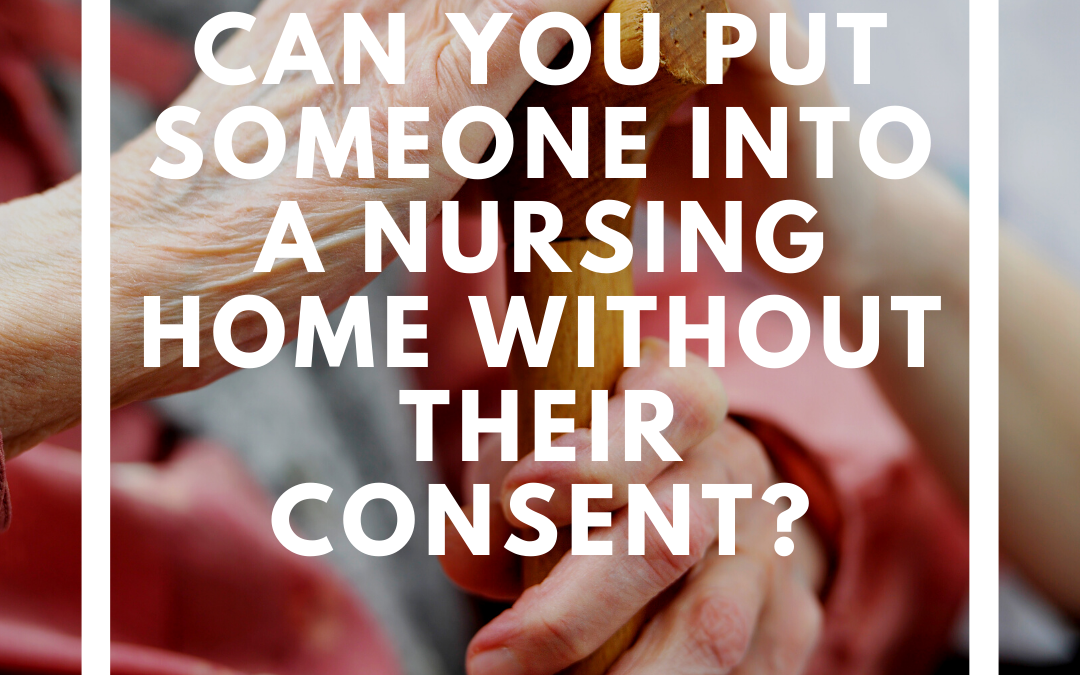The decision is usually made out of necessity, because the person’s health and independence has deteriorated to such a degree that they are no longer able to remain living at home, or they don’t have access to the support they need at home.
The decision is never taken lightly, and often causes great anguish, not only for the person moving into care, but also for loved ones who are involved.
The best outcome is that the person who has moved into care is happy in their new home, and that the family has peace of mind their loved one is being well cared for.
But what happens when someone refuses to go into care, even though others think it would be the best option for them?
A person must consent to moving into a nursing home
A reader recently shared her experience with us on our Facebook page. She cared for her husband at home for 16 years and told HelloCare the last few years were “a nightmare”. She said she felt trapped at home with him all day, had no support, and at times feared for her life.
When she tried to put her husband into a nursing home, she couldn’t because he would not give his consent.
Danielle Robertson, director of DR Care Solutions, told HelloCare that anyone who is moving into a nursing home must consent to doing so.
“Unless the person has lost capacity, you can’t put a person into care without their consent,” she said.
“You can’t force a person against their will.”
The decision as to whether or not the person has lost capacity can be made by their medical practitioner or geriatrician, Ms Robertson said.
People should have an Enduring Guardian in place and Power of Attorney legal documentation completed well before the person loses capacity, Ms Robertson said.
“If the person has lost capacity, their Enduring Guardian can make decisions in relation to care, health and accommodation decisions,” she said.
What are the reasons behind their objection?
Craig Gear, Chief Executive Officer of the Older Persons Advocacy Network (OPAN), told HelloCare, “No, you can’t just put someone into care. But the exact rules are different in the various states and territories.”
Mr Gear said if a carer is struggling to provide care to their loved one, they can call in an advocate to try to get to the bottom of what their objections are to being put into care, or help the carer get access to the services and support they need.
“An advocate can walk through their objections, and help to unpack their concerns,” he said.
An ACAT assessment can help carers get access to the services they need at home, although getting access to home care packages in a timely manner at the moment is difficult, he said.
Respite care options should also be considered, as carer stress is often a significant problem in these situations, Mr Gear noted.
“My heart goes out to carers”
Eventually our reader’s situation improved, but she is calling on us all to support carers at home, who are often dealing with extremely difficult circumstances.
Her husband is finally in a nursing home.
“I still think of the people just like I was and I feel so sorry for them. They seem to be the forgotten ones. All the talk is about the carers in a nursing home, and it is not right!
“If any of you carers are reading this, my heart goes out to you because I know what you are going through!”
You can contact OPAN on 1800 700 600 for more information about older people’s advocacy services.
Source: Can you put someone into a nursing home without their consent? – Hellocare
Whilst they are living at home we have a number of products ideas (besides wearing an Emergency ID necklace and/or bracelet) for those living alone include, but no limited to:
Emergency ID Spot Care Information Kit – Emergency ID Australia
Emergency ID Phone Pocket – Emergency ID Australia
Emergency ID Key Ring – Emergency ID Australia







